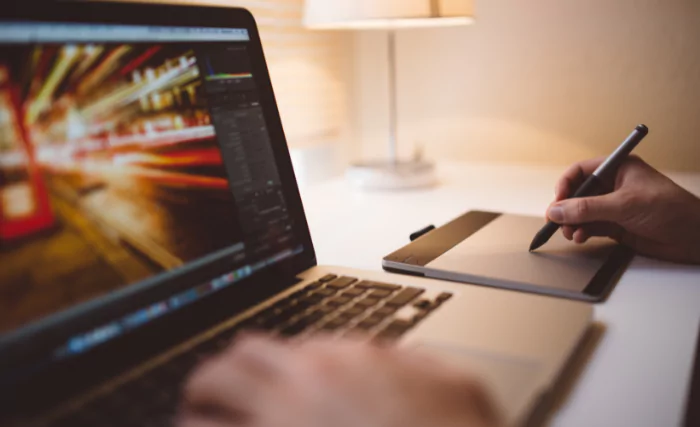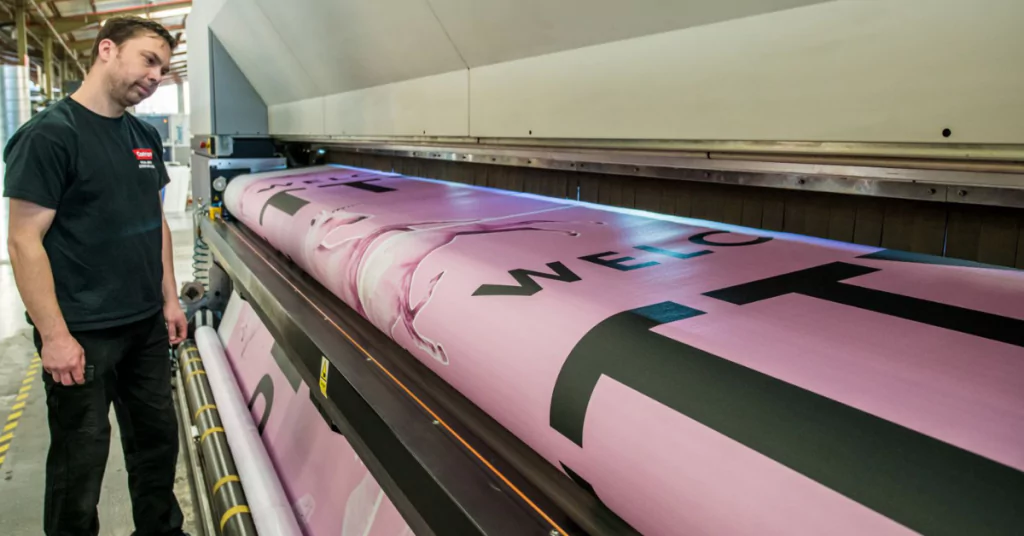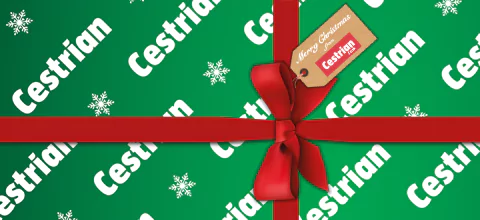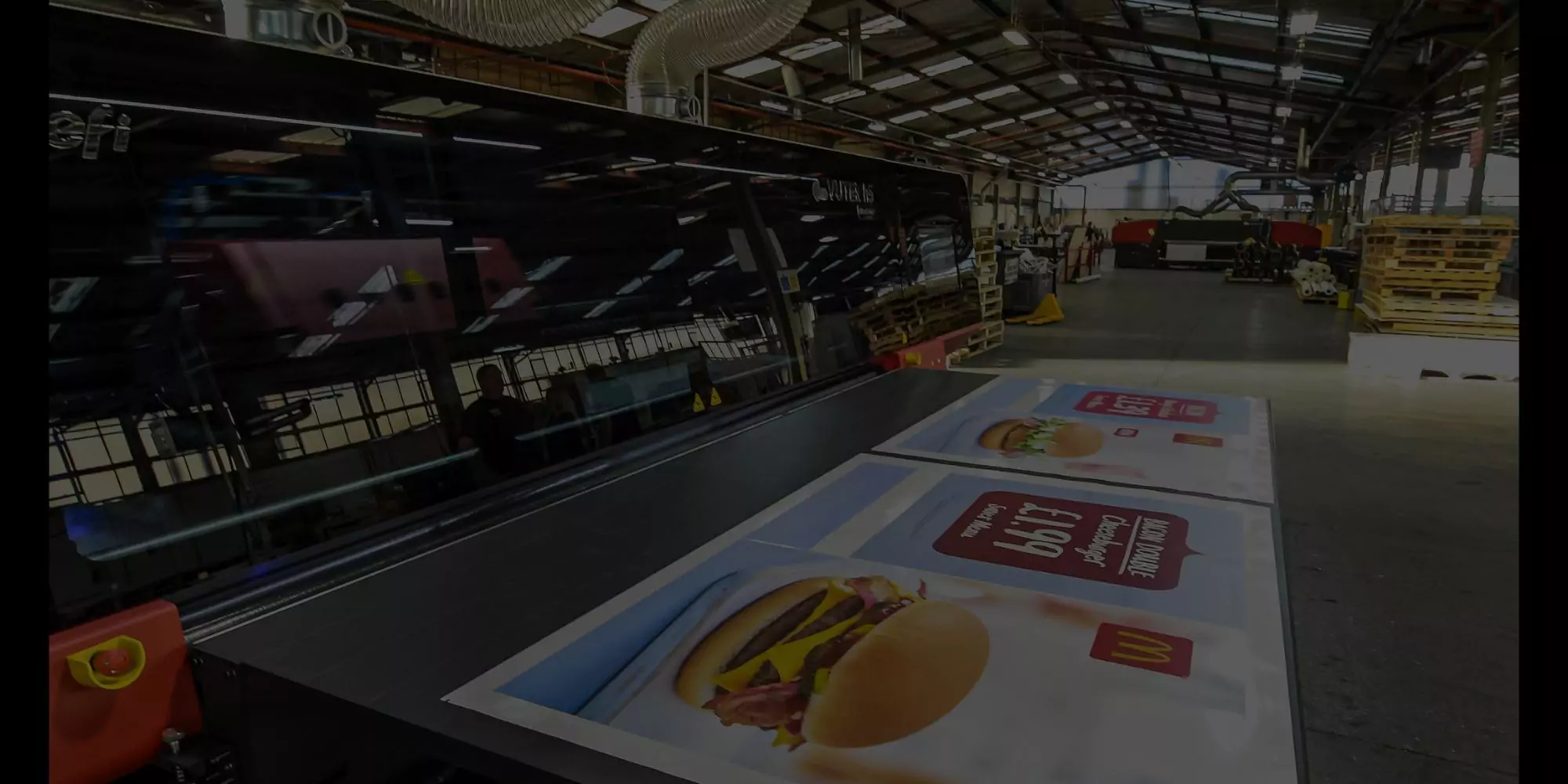
Large format print design tips
Designing impactful artwork suitable for large format print can be a challenge. There are specific considerations needed when designing large banners, sizeable POS displays or outdoor hoardings, compared to creating smaller printed posters, brochures and table-top stands.
So, before you take the plunge and dive into creating your large format artwork, it’s worth understanding a few basic design principles to save time, cost and other challenges further down the line.
Here we take you through six design tips to ensure that your large format advertising materials work as you intended;
1. Handle your colour palette well
It goes without saying that you should choose colours which work well together in a complementary palette. Keep your theme simple – perhaps only two or three colours, which will make a better impact and enhance your brand identity. The exception to this rule is for products where details are necessary, such as event posters, when you can broaden your range more successfully.
It may seem tempting to go for RGB colour mode when designing as this has more colour choices available. But, printers use CMYK mode and will adjust the colours you choose accordingly, so it’s better to design using CMYK so you know exactly what colour you’ll be getting in your large format digital print.
2. Use a readable font
It’s generally best to stick to simple, readable fonts, so that your information can be read clearly, even from a distance. Script styles and serif fonts may look attractive from a design point-of-view but are often difficult to read quickly. This will detract from your message when you only have moments to grab your consumer’s attention.
Use a font that is well-spaced and has clear gaps between the words. Avoid bold type as it can look overloaded, and thin fonts as your text can get lost amongst your other elements. Make sure your font colour contrasts well with your background.
3. Keep things simple
Less is usually more when creating an effective design, so keep things simple and uncluttered.
Go for striking logos and artwork, rather than over-complicating the look and keep text limited to the essentials. Don’t run your design right up to the edge – so-called ‘page bleed’ might cause you to lose the edge of your graphic during printing.

Carefully designed artwork ensures perfect large scale graphics at print stage
4. Check your design from a distance
This may seem very obvious, but your large format graphics are intended to be viewed from a distance. A design that looks great on your laptop screen may look completely different when viewed much further away. If QR codes are needed, ensure these are suitably sized and easy to find.
Try standing around 10 -20 feet away from your screen and check that the main aspects of your graphic still work well together. Does your design still have the intended impact? Is the overall look cohesive? Do the colours work well together? Can you read the information clearly? Asking someone else to take an impartial look at your design can often highlight any difficulties.
5. Know where your print is going
Think about where your printed item will be situated; is it standalone, amongst products for sale or alongside other printed materials? Being aware of its printed location, competing visuals and installation plans is crucial for a successful design that works in the real world.
At installation, your location surface may not be smooth and straightforward. Check in advance for any curves, edges and bumps so you can make design allowances before printing to keep your creative looking seamless.
6. Check your image quality
Supply your artwork file as a high res PDF to ensure that all elements of your design remain as expected once the file has been submitted. Fonts, logos, jpegs and vector images are embedded into the PDF file with no need to submit multiple elements independently.
The image resolution really depends on your viewing distances:
- Less than 4 feet away = 100 dpi at full size
- 4 to 12 feet away = 72 dpi at full size
- 12 feet and above = 36 dpi at full size
Don’t forget to properly format your PDF for print – add your trim and bleed boxes to each edge as you export the PDF. You can ask your printer for a template.
Let us help with your large format print design
As experienced large format print experts, if you’re looking for guidance when designing your graphics, we’d be glad to discuss your projects and requirements with you. Contact us to see how we can help.


